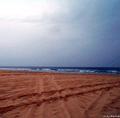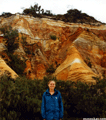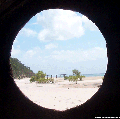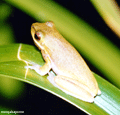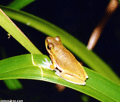
|
AUSTRALIA: Fraser Island | Heron Island | Daintree | Landscapes | Wildlife | West |
|
|
|


Recommended travel guides on Australia:
Fraser Island -- from Wikipedia
The island is reached by ferry and a four wheel drive vehicle is a requirement. There are plenty of available campsites with awesome views of the ocean and migrating whales. There are also restricted areas where the land is left to rehabilitate.
Tour buses do travel the island but the true fun is renting a four wheeler and driving on the beach and on the sand roads.
The fresh water lakes on Fraser Island are some of the cleanest lakes in the world. The most popular is Lake McKenzie which is inland from the small town of Eurong. It is where many a tourist stops for a restful swim. It is a "perched" lake sitting on top of compact sand and vegetable matter. The beach sand is nearly pure silica and is good for washing hair, teeth, jewelry, and defoliating the skin. The lakes have very little nurturance and is slightly acidic. Sunscreen and soaps are a form of pollution. Also urine will change the color of the water thus embarrassing anyone who did not use the convenient restrooms.
Eli creek is a popular place to swim on the east coast of the island, as the water is fresh and cool year round. There is a boardwalk that is good for a short walk through the bush. Some cell phones will work south of Eli creek.
Dingoes are common on the island. These animals are some of the last remaining pure dingoes so dogs are not allowed on the island. Tourists are warned not to feed the dingoes on the basis that they are wild dogs. There is no history of dingoes attacking humans on Fraser Island; although in 2001, a boy wandered away from his family and was discovered dead, with indications of a dingo attack. The true circumstances of his death may never be known. It is also wise to secure your shoes as the Dingos sometimes take a shoe and chew it to an unusable condition.
The original name of the island is 'K'gari' by the Butchulla people. It means paradise. The arrival of European settlers to the area was an overwhelming disaster for the Butchulla people. There are currently no aboriginal tribes living on Fraser Island.
The name Fraser Island comes from Eliza Fraser. Captain James Fraser and his wife, Eliza Fraser, were shipwrecked on the island. The name of the ship was the Stirling Castle. Captain Fraser died but Eliza did make it off the island. Since then Eliza made money traveling around England and Australia telling her story of the events that had occurred while the Stirling Castle�s officers were on the island. She is known to have told several versions of the story; it is unknown which version is the most accurate.
The frogs seen in these pictures are Acid frogs, which are named for their presence around highly acidic ponds and lakes.
[an error occurred while processing this directive]





















